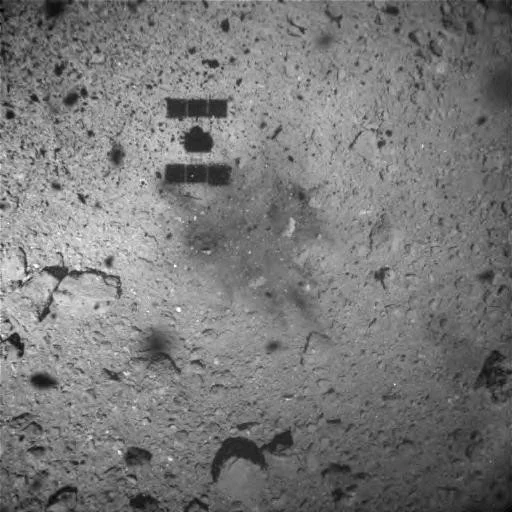Hayabusa 2 Begins Ryugu Exploration
Credit: JAXA.
On September 21, 2018 the Japan Aerospace Exploration Agency (JAXA) announced that MINERVA-II-1’s two rovers, Rover-1A and Rover-B, landed on asteroid Ryugu. This was the first time humans have landed a mobile exploration robot on an asteroid along with capturing images from an asteroid’s surface. The photographs taken by the rovers showed a beautiful scene of boulders, without visible regolith. On September 30 preparations were made to deploy MASCOT, and on October 3 it landed and operated on Ryugu for 17 hours, after which more pictures were captured.
In the period since then, the Hayabusa 2 team has performed another two touchdown rehearsals coming as close as 12 meters on October 25. Following this, Hayabusa 2 spent the month of November completing observations with it’s laser altimeter and optical cameras, along with photographing a target marker that was dropped on the surface of Ryugu. It also successfully descended over the sub-solar point where the spacecraft, Sun, and target marker on Ryugu lined up. All these achievements were completed in preparation for the touchdown sample collection operation to occur in late 2019.
Hayabusa 2 is a mission of firsts. The fact that Japan has taken asteroid exploration so seriously is excellent for the field of space resources. By completing close-up investigations of the various spectral types of asteroids, we will learn more beyond what can be observed from a distance, or from meteor fragments found on Earth. This is important for many reasons, such as understanding solar system formation and gaining a better ability to estimate asteroid features from afar. This mission to Ryugu gives us a close up view of a Cg-type, a rare combination of both C-type (carbonaceous) and G-type (a sub-type of C that indicates phyllosilicate minerals).
Before Hayabusa 2 arrived at Ryugu, the asteroid was estimated to be worth almost $83 Billion USD by Planetary Resources, being based on remote observation. The composition was predicted to include nickel, iron, cobalt, water, nitrogen, hydrogen, and ammonia. This material estimate was calculated using current Earth based market prices. Even through the hypothetically mined asteroid materials wouldn't likely go to terrestrial markets due to the large transportation cost and market flooding, it represents a best guess for the mineable revenue potential. Instead, in-situ resource utilization of those materials gives them a higher net value for uses in space compared to the cost of launching them from Earth.
The Hayabusa 2 mission will allow this estimate and similar asteroid type estimates to be further refined, increasing our confidence in exploring and utilizing similar nearby asteroids in the future.










